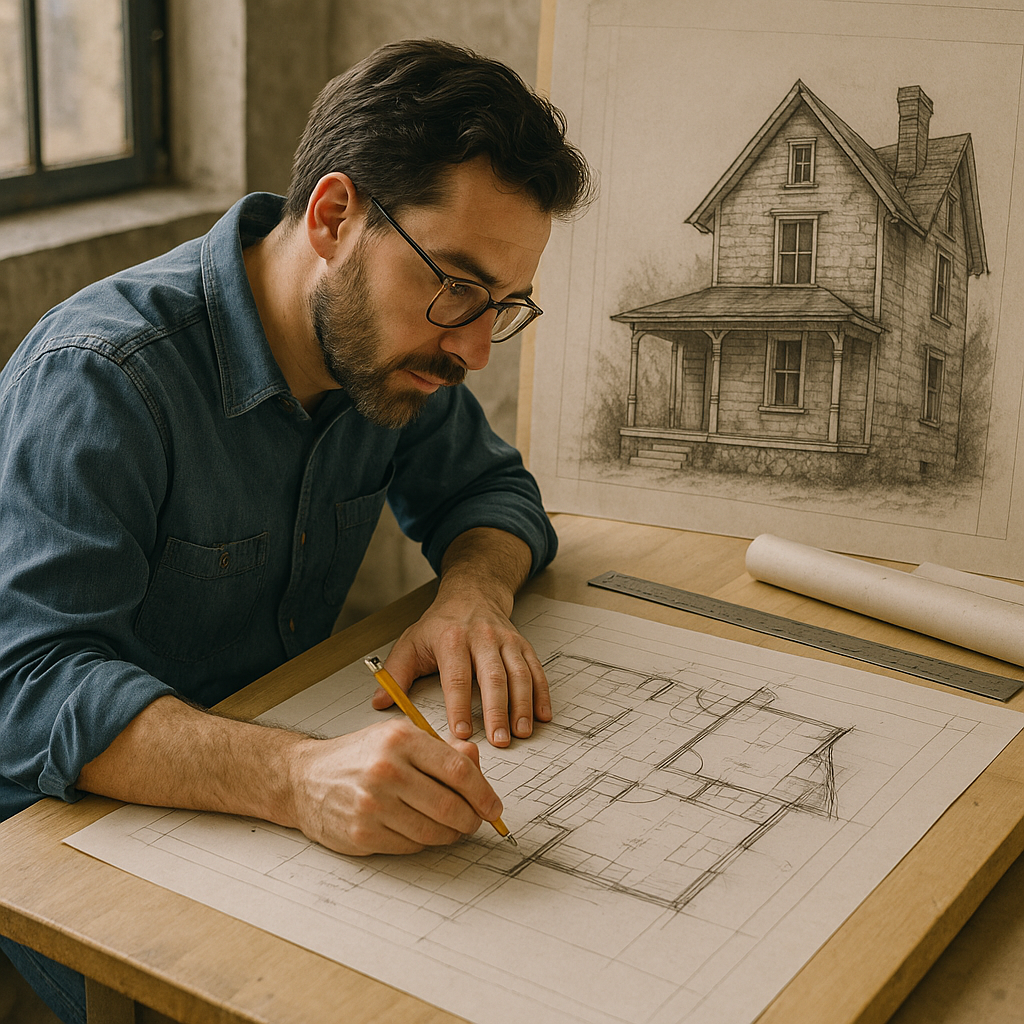Trusted Old House Architects
Finding An Architect For Your Old House
Why Hire an Architect for an Old House?
Preserving Historic Character
Old houses are more than walls and roofs—they are pieces of living history. An architect trained in preservation understands proportion, scale, and period details. They can ensure that any changes—whether new windows, an addition, or reconfigured interiors—blend seamlessly with the original design rather than clash with it.
Navigating Complex Systems
Unlike modern homes, historic houses often have quirks: irregular framing, stone foundations, handmade nails, or hidden structural modifications from earlier eras. An architect knows how to address these challenges while still keeping the home safe, livable, and true to its origins.
Maximizing Modern Comfort Without Compromise
You may want modern conveniences—updated kitchens, better insulation, efficient HVAC—without losing heart pine floors, plaster walls, or walnut staircases. A skilled architect helps balance old and new, preserving craftsmanship while discreetly integrating twenty-first–century living.
Qualities to Look for in an Architect
1. Experience With Historic Homes
Not every architect is equipped for old-house work. Look for someone who has completed projects similar in age and style to your own. Ask for portfolios that highlight restorations rather than only new builds.
2. Knowledge of Preservation Standards
If your home is on (or eligible for) the National Register of Historic Places—or simply significant to your community—your architect should be familiar with the Secretary of the Interior’s Standards for Rehabilitation. These guidelines protect historic integrity and are often required for tax credits and grant funding.
3. Collaboration Skills
Restoring an old house usually involves a team: contractors, engineers, craftsmen, inspectors, and sometimes state or local preservation offices. Your architect must be able to coordinate among all these parties smoothly.
4. Respect for Your Vision
The right architect doesn’t impose a modern agenda onto your house. Instead, they listen to your goals, honor the home’s story, and help you achieve results that feel both personal and authentic.
The Architect’s Role in Your Project
1. Assessment and Documentation
Before swinging a hammer, your architect will study your home carefully. They may create measured drawings, photograph details, and research the home’s history. This establishes a roadmap for responsible design.
2. Design Development
From small changes (a porch rebuild) to major projects (a new wing), the architect produces drawings that show how the design respects historic proportions, materials, and aesthetics.
3. Permits and Approvals
Many historic projects require approval from local architectural review boards, preservation commissions, or zoning officials. Your architect can shepherd your plans through these channels to save time and frustration.
4. Construction Oversight
During building, your architect often makes site visits to ensure contractors are following the design, using the right materials, and protecting original features.
Practical Considerations
1. Budgeting
Hiring an architect is an investment. Fees are typically a percentage of construction costs or a flat fee for design work. In the long run, an architect often saves money by avoiding costly mistakes, ensuring energy efficiency, and adding long-term value to your property.
2. Choosing Materials
A preservation-minded architect will guide you toward materials that match your home’s age—whether lime mortar for brick repointing, true divided-light windows, or reclaimed wood floors—while helping you understand where modern substitutes may be acceptable.
3. Historic Tax Credits and Incentives
If you plan to pursue state or federal historic tax credits, your architect’s documentation and adherence to preservation standards are essential for approval.
How to Begin the Hiring Process
Ask for Recommendations: Local preservation societies, historic property realtors (such as The Old House Agent), and state preservation offices often keep lists of architects with relevant experience.
Check References: Speak with other homeowners who have hired the architect. Ask how well the architect respected the home’s historic character, stayed on budget, and communicated during the process.
Conduct Interviews: Don’t be afraid to interview more than one architect. Ask them about their philosophy toward old houses, their favorite historic projects, and how they handle unexpected challenges.
Start Small if Needed: Sometimes hiring an architect for a consultation or feasibility study is the best first step before committing to a full design contract.
Conclusion
Hiring an architect for an old house is not a luxury—it’s often the key to protecting your home’s character while making it safe and functional for modern living. The right architect will approach your property with the reverence it deserves, guiding you through design choices, regulations, and construction with expertise and care.
Your home has already stood for a century or more. With the right stewardship, it can stand proudly for another hundred years—its story intact, its beauty preserved, and its usefulness renewed.
